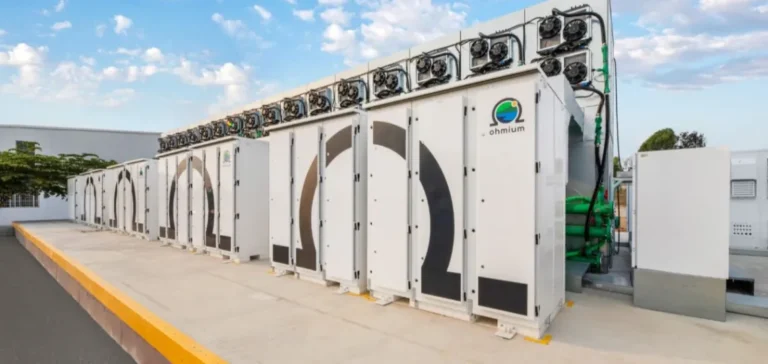Ohmium International has presented an updated version of its Lotus electrolyser, featuring a horizontal footprint of 29.7 m² per megawatt installed. This surface includes areas for maintenance and access, according to a company release. The Lotus Mark 3 system integrates all necessary components for hydrogen production, including water treatment, gas purification, cooling systems and power electronics.
This new design, fully modular, relies on a rack-in/rack-out architecture that facilitates maintenance and reduces reliance on heavy equipment during installation. The system is designed to operate without cranes in most cases, limiting construction costs and simplifying on-site logistics. Ohmium states that the goal is to offer a commercially viable solution, particularly for regions where land availability is limited or expensive.
Full system integration and cost reduction
The system converts alternating current electricity and municipal water into pressurised hydrogen with purity levels exceeding 99.99%, using Proton Exchange Membrane (PEM) electrolysis technology. All components are pre-integrated at the factory, reducing deployment times and optimising the system’s energy performance. By making the process more compact, Ohmium aims to limit upfront capital expenditures (CAPEX) and improve operational expenses (OPEX) for industrial customers.
The company states that this innovation is designed to meet the needs of so-called “hard-to-decarbonise” sectors by making green hydrogen production more accessible and less dependent on existing infrastructure. It particularly targets markets where extreme climates or space constraints hinder project development.
International deployment and consolidated funding
Ohmium reports a project pipeline exceeding 2 GW across three continents. Lotus electrolysers are already operating in environments with temperatures ranging from -40°C to 55°C, the group noted. Founded in the United States, the company has manufacturing sites in India and operates internationally through various partnerships.
In 2023, Ohmium raised $250mn in Series C funding led by TPG Rise Climate to support its expansion strategy. Chief Executive Officer Markus Tacke said the new system “is transforming the economics of green hydrogen” by combining installation flexibility with cost reductions, without compromising equipment performance.






















